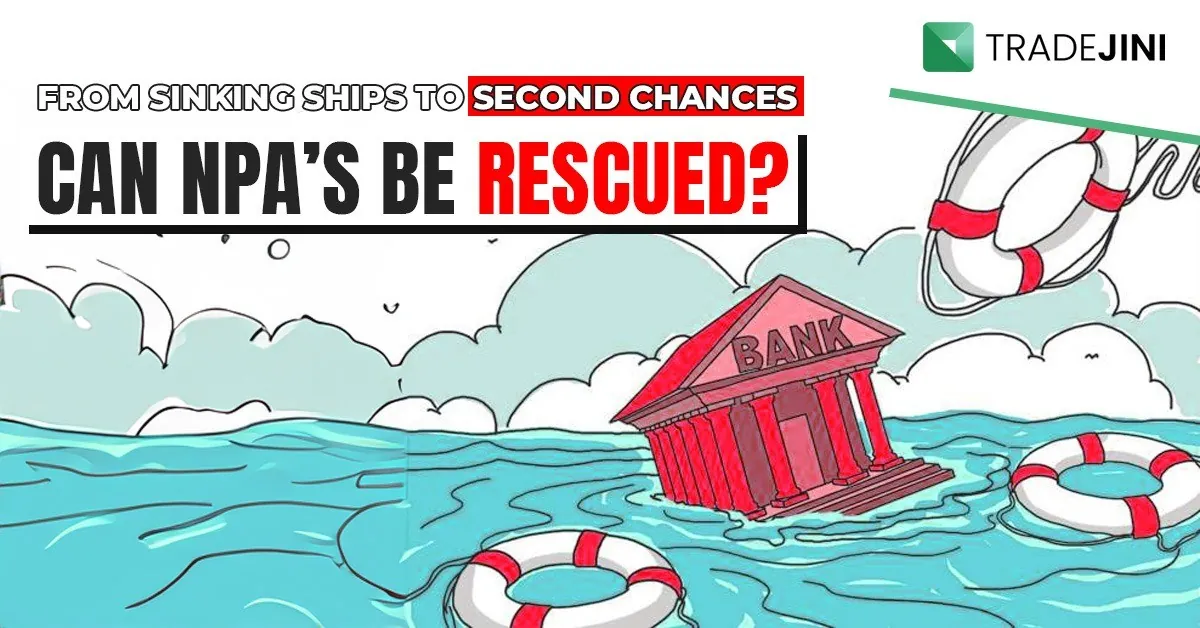Non-performing assets are financial nightmares for banks and institutions. Imagine loans or advances that stop generating income because borrowers haven't made payments—that's an NPA.
Assume this, instead of money flowing in, it gets stuck with delinquent borrowers. The longer debts remain unpaid, the higher the risk of them becoming unrecoverable losses. It's like a bucket with a hole - valuable resources drain away, impacting the entire financial system.
In brief, Non-performing assets (NPAs) refer to loans or advances that have not been repaid by the borrower and have remained overdue for a significant period. These assets do not generate any income for the lending institution and are considered a liability on their balance sheet.
Examples of NPA's in banking
Non-Performing Loans: These are loans that have not been repaid by the borrower and have remained overdue for a significant period. NPLs can be further classified into substandard, doubtful, and loss assets based on the likelihood of recovery.
Defaulted Mortgages: When a borrower defaults on their mortgage payments, the loan becomes a non-performing asset for the bank. The bank may repossess the property and sell it to recover the outstanding amount.
Unpaid Credit Card Debt: Credit card debt can become non-performing if the cardholder fails to make payments. Banks may write off the debt or sell it to a debt collector.
Overdue Business Loans: Business loans can become non-performing if the borrower fails to make timely payments. Banks may restructure the loan or take possession of the security to recover the outstanding amount.
Bad Debts in the Corporate Sector: Large corporations may take loans from banks for various purposes. If the corporation fails to repay the loan, it becomes a non-performing asset for the bank.

NPA can be classified into four categories
Standard Assets: These are NPAs that have been due for 90 days to 12 months. They are considered to have normal risk levels and are the least severe category of NPAs.
Sub-Standard Assets: These NPAs are due for more than 12 months. They pose a higher risk compared to standard assets and are assigned a market value reduction by banks and financial institutions.
Doubtful Debts: These Non-performing assets remain due for a minimum of 18 months. Lenders doubt the ability of such borrowers to repay their debts.
Loss Assets: These NPAs come with extended periods during which lenders have given up hope of recovering their money. The losses are then forcefully recorded as a write-off on their balance sheets.
Factors leading to non-performing assets
Several factors can contribute to non-performing assets in the long run. Banks lending to individuals or businesses with poor credit ratings or without proper investigation can lead to non-performing assets. Inadequate follow-up on pending payments with borrowers can also result in NPAs.
Secondly, corruption in financial institutions, particularly in public sector banks, can lead to non-performing assets due to involvement between lenders and borrowers. Political pressure on banks to lend to struggling sectors or industries is another factor.
Thirdly, during economic recessions, companies experience decreased revenue, reduced profitability, and increased expenses. As a result, they struggle to meet their loan obligations, leading to non-performing assets for banks.
What Happens to Non-Performing Assets?
When a loan becomes a non-performing asset, lenders have two options to recover their funds. If the assets are pledged, the lender may pursue legal action against the borrower to liquidate the assets and recover their investment.
In the absence of pledged assets, the lender may classify the loan as a bad debt and write it off their balance sheet. They may also transfer the NPA account to a collection agency at a discounted rate, allowing them to recover a portion of their investment.
In both cases, the goal is to minimize losses and recover a maximum of the loan amount as possible.
Bad loans, good times? The curious case of India's NPA rise
In 2005, Vijay Mallya, the owner of The Kingfisher Airlines Ltd, expanded the airline's operations, making it the second-largest in India. However, a determined Mallya sought to further expand Kingfisher’s reach by acquiring international airlines. In 2007, KFA purchased the struggling Air Deccan and rebranded it as Kingfisher Red. Unfortunately, both airlines started bearing losses, leading 17 banks, mostly PSUs, and some private banks like ICICI and HDFC, to provide KFA with loans worth ₹6,900 crores. Eventually, in the year 2010, Kingfisher Airlines became a non-performing asset for banks.
The Kingfisher Airlines Ltd case serves as a cautionary tale for banks, governments, and legal systems.

Preventive measures
To prevent non-performing assets, lenders must adopt rigorous credit risk assessment practices. They should scan credit ratings from the Credit Information Bureau India Limited to evaluate loan applications. Timely reminders to borrowers for payment can help prevent non-performing assets. Offering payment plans and settlements can facilitate regularizing loan accounts.
Lenders may utilize alternative dispute resolution methods, such as Lok Adalats and Debt Recovery Tribunals, for quick settlements.
Strict measures against large non-performing assets are essential. Professional asset reconstruction companies can help lenders manage non-performing assets more effectively. Circulating the details of defaulters can deter others from lending to them.
Insolvency and bankruptcy policies can aid distressed borrowers, while corporate debt restructuring is an option for borrowers. Lenders must be vigilant to prevent borrowers, especially corporates, from diverting funds to other subsidiaries or startups.
Prevention is better than cure
Proactive approaches to credit risk assessment, loan recovery, and debt restructuring can help lenders avoid potential losses and ensure a strong financial system. Effective management of non-performing assets is crucial for financial stability and economic growth.
Understanding NPAs is crucial, as they pose significant risks. By keeping an eye on their prevalence and types, we can better assess the health of institutions and identify potential financial storms developing ahead.
“NPAs are ticking time bombs disguised as bad debt”

